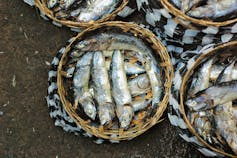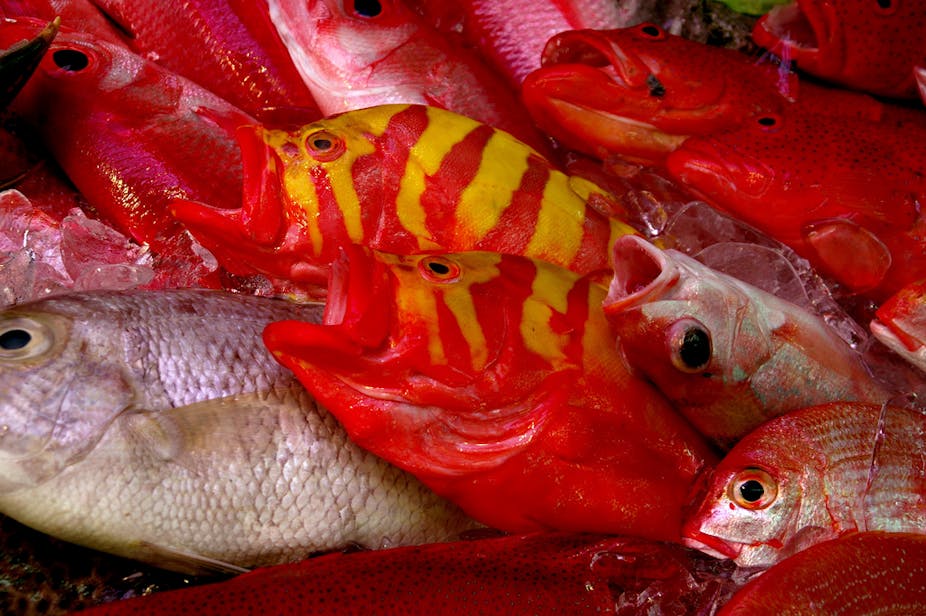The sudden deaths of Sunshine Coast woman Noelene Bischoff and her daughter Yvana in Bali on the weekend have brought food allergies and seafood poisonings into the spotlight.
We still don’t know the cause of death – the investigation is now in the hands of the Queensland coroner – but one speculated cause is ciguatera fish poisoning (CFP), a neglected tropical disease which has a long history in Australia and the Pacific.
Poisoning symptoms similar to CFP after consuming marine tropical fish were described by the Pacific explorers Pedro Fernandes da Queiros in 1606 and James Cook in 1776, in his journal during his second voyage to the Pacific.
CFP is the most common non-bacterial illnesses associated with fish consumption, affecting 50,000 to 500,000 people globally per year. In Australia, there were more than 1,400 documented cases between 1965 and 2010, including two fatalities.

Symptoms vary depending on the amount of toxin and composition, portion size, and individual susceptibility or past exposure to toxins.
Symptoms may be gastrointestinal, neurological and sometimes cardiovascular, in cases of severe intoxication. Neurological symptoms include paraesthesias (pins and needles), cold allodynia (pain due to a stimulus that does not normally cause pain). Joint and muscle pain are also common, and diarrhoea is the most prevalent gastro-intestinal symptom. In extreme cases, some patients can die from respiratory failure.
Symptoms can persist for weeks, months or in some cases, years. Repeated exposure to CFP over time may increase the severity of symptoms and prolong the illness.
Because symptoms vary greatly, CFP can easily be confused with other illnesses, making it very difficult to diagnose unless the toxins can be identified in the seafood the patient has consumed.
The only therapy for CFP to have been evaluated by randomised blinded clinical trials is the diuretic drug mannitol, given intravenously. It’s recommended the drug is administered within 48 to 72 hours of the ingestion of toxic fish, and has been found to significantly alleviate symptoms in many patients.
Ciguatoxin
CFP is caused by an accumulation of at least one toxin, ciguatoxin (CTX) and its related chemicals, which are produced by a group of marine microalgae, dinoflagellates, which live attached to algae, coral rubble and seagrass.
About one hundred species of fish and other marine animals have been documented to accumulate toxins, which can build up through the food chain, affecting the whole ecosystem.
Species of the dinoflagellate genus Gambierdiscus produce the toxin and are found worldwide and throughout the Pacific, including in Queensland and at some sites in New South Wales.

Little is known about the distribution and abundance of Gambierdiscus species in Australia. While originally considered to be tropical, our research has shown that these species can be found as far south as Merimbula in southern New South Wales.
In Australia, seafood safety is monitored by government bodies, and cases of CFP are very rare. But in several of our neighbouring Pacific Island nations such as New Caledonia, the Cook Islands, and French Polynesia, the incidence is significant. Studies in New Caledonia have estimated that 35% to 70% of the population contract CFP in their lifetime.
Rising rates
Despite being significantly under-reported, CFP occurrence worldwide appears to be increasing, with reports of a 60% increase in the Pacific Islands over the last decade.
Besides the public health impacts in these nations, CFP can be an impediment to the development of fisheries export industries, which are often economically significant for small island nations.
We are still unclear on what’s to blame but coral bleaching, higher water temperatures and the replacement of coral habitat with macroalgae have all occurred alongside the rise of Gambierdiscus species.
One long-term aim of our research is to determine the relationship between the abundance and diversity of Gambierdiscus species at a site and their production of ciguatoxin in fish.
We are currently working with AusAID to train participants from developing nations in the Pacific Island to raise awareness of the causes and impacts of CFP, and to design monitoring tools and programs to alleviate risks from this illness.

